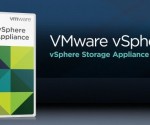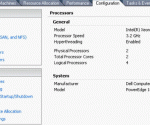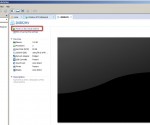What are different types of virtualization
We can classify Virtualization in three main categories as follows:
1. Hardware Virtualization: This is the most common type of Virtualization prevalent in corporations and IT companies. In this case, Virtualization software is typically run on an actual physical server to capture its “image” and port it to being a “Virtual Server” with all the same settings intact.
This image is then run from a part of your current existing virtual server farm on whatever technology you are implementing (such as VMware or Hyper-v). Consolidating your physical server to a virtual one gives you many advantages such as:
a) Making server upgrades easy as you can add RAM and CPU on the fly to a virtual server
b) You can retask your old physical server
c) Never have to worry about physical component failure or not being able to find outdated hardware
d) Smaller carbon foot print due to more efficient power distribution and utilization in a virtual environment.
2. Desktop Virtualization: Desktop virtualization is the new trend in corporations these days as organizations move away from the pain of maintaining expensive hardware which is often under utilized. VMware was the first company to come out with an Enterprise implementation and they called this technology VDI or Virtual Desktop Infrastructure, since then other major players such as Microsoft and Citrix have joined in to take partial share of the VDI or Desktop Virtualization market.
In Desktop Virtualization, typically a Workstation is virtualized with all its applications, user customizations and preferences all in a virtual machine. This virtual machine can be accessed from anywhere in the organization using any workstation hence cutting down on licensing costs for installing software on individual machines. Machine maintenance and patch management becomes much easier for IT support personnel. Users love it because their machine is “never down” and they always have access to their customizations on their virtual machines. Virtual Desktops also reduce the carbon foot print and increase Total Cost of Ownership when compared to maintaining physical machines.
3. Storage Virtualization: Finally we have Storage virtualization. This is where the actual storage space that use to be offered by your SAN or NAS is virtualized. Virtualizing storage space means you also are virtualizing your Virtual Machine disk files as well. This becomes extremely useful for your Business Continuity Planning and Disaster Recovery, because with a virtualized infrastructure, you can very easily replicate your storage across over to another location or even a different geographical regions. Better yet, Corporations are now looking into implementing fault tolerant clusters for their storage. Newer technologies such as SnapMirror from NetApp make this possible, the initial replication is bandwidth intensive but the subsequent transfers are just differentials maintained on both sides of the wired cluster. In case business is running under loss, you can get help selling your business.



















[…] What are different types of virtualization […]
[…] What are different types of virtualization […]